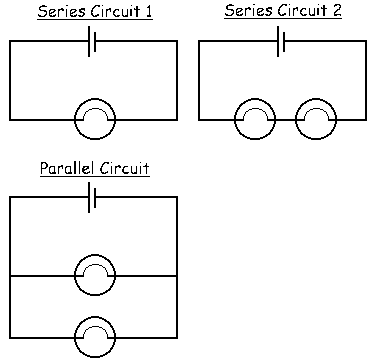

Electric Current involves electrons repelling one another and passing through a conductor. Ex. The pumping station provides the water with gravitational potential energy, pumping it up into the water tower. the water then later loses this energy as it is piped through the sprinkler and back to its point of origin. the same thing occurs in an electric circuit. The energy source provides electrons with energy and the electrons are transported by the conductors through the circuit and then back to the source to be re-energized.
The rate of charge flow can be calculated using this expression:

I is the symbol given to calculate the rate of charge flow in amperes (A)
Q is the charge in coulombs (C)
t is the time in seconds (s)


 Once upon a time, current flow was believed to move from the positive (+) terminal to the negative (-) terminal on any power supply. it is now well understood that, in actuality, current is a flow of negatively charged electrons repelling one another.to keep track of this, a colored wiring convection is used in which black represents the negative terminal and red represents the positive terminal of any power supply.
Once upon a time, current flow was believed to move from the positive (+) terminal to the negative (-) terminal on any power supply. it is now well understood that, in actuality, current is a flow of negatively charged electrons repelling one another.to keep track of this, a colored wiring convection is used in which black represents the negative terminal and red represents the positive terminal of any power supply. Definitions:
♦ Electric Current is the flow of charge.
♦ Current is the rate of charge flow.
♦ Conventional current is a model of positive charge flow.
♦ Direct current or DC is the current flow in a single direction from a power supply through the conductor to a load and back to the power supply.
♦ Alternating current or AC occurs when the electrons periodically reverse the direction of their flow.
♦ Circuit is the path of the current and is required for any electrical device to work properly.
♦ Voltmeter is a device that measures the difference between any two points. (Must be connected in parallel with a load in order to compare the potential)
No comments:
Post a Comment